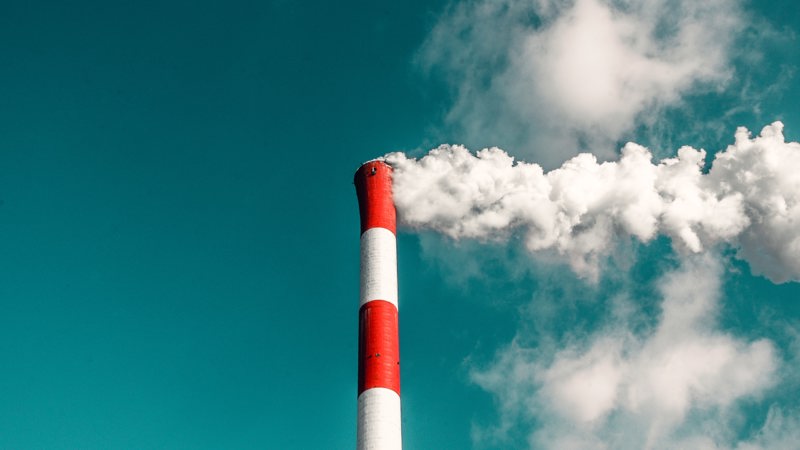
The European Commission recently launched a consultation on a potential carbon border adjustment mechanism (CBAM), which would aim to ensure a level playing field in trade between the EU and other jurisdictions that take a laxer approach to tackling greenhouse gas emissions. Carbon border taxes are a key part of the Commission’s plans for the bloc to achieve climate neutrality by 2050. But making a CBAM work will not be without its challenges, as we explore in this article. The eventual design will determine if the scheme will be effective and whether it will help or harm European industry.
Background: Carbon leakage can hinder global efforts to limit greenhouse gas emissions
Within the EU, the emissions trading system (ETS) sets a cap, and as a consequence a price, on carbon emissions from power plants, industry and flights within the EU. The price of an EU Allowance (EUA) has averaged around €25/tCO2e over the last year. The EU is not alone in pricing carbon. Initiatives are beginning to spread globally (57 have been implemented or are scheduled for implementation, totalling 11 GtCO2e). However, these schemes vary significantly in their stringency and scope.
This in turn raises concerns regarding a possible relocation of emissions-intensive activities from jurisdictions that have stronger limits on emissions, such as the EU, to others with looser restrictions. This particular form of regulatory arbitrage, known as carbon leakage, could be economically inefficient and environmentally suboptimal. It may mean that some jurisdictions incur the direct and indirect costs related to abatement, while global emissions levels and the corresponding expected damages from climate change do not fall. Indeed, they may even increase if, for example, importing batteries from abroad manufactured using power from a coal-dominated generation mix entails a higher carbon footprint than batteries produced in Europe.
EU carbon leakage protection rules are reaching their limits
The EU and other jurisdictions have so far tackled carbon leakage through shielding-based approaches. These involve compensating eligible businesses for some or all of the carbon costs they face due to the ETS. Eligibility has been limited to those sectors of the economy that are:
- particularly emissions intensive, and
- exposed to international trade,
on the grounds that these would be particularly susceptible to competitiveness and leakage issues in a world where the toughness of climate policies varies significantly.
Eligible EU industries currently can receive shielding through two mechanisms:
- Compensation for direct costs triggered through the ETS: Eligible firms receive a limited number of EUAs for free to cover a certain share of their direct emissions based on EU-wide rules; and
- Compensation for indirect costs: Member states can choose to compensate eligible firms financially for the carbon costs they bear indirectly in the electricity prices that are passed on by power generators, subject to state aid rules.
In both cases, compensation is linked to “best available technology” benchmarks. The existing scheme has certain strength and weaknesses.
The main advantage is:
- the scheme’s application is confined entirely to domestic producers that need to report emissions. This simplifies administration to some degree.
The main disadvantages are:
- Revenues which member states might otherwise have earned by auctioning permits are sacrificed, limiting the scope to reduce other taxes.
- Most importantly, the scheme’s effectiveness in ensuring the primary objective of a level playing field may increasingly diminish over time. By law, the allocation of free certificates in the ETS must not exceed 43% of the legal cap on emissions. In order to achieve this, a “cross-sectoral correction factor” (CSCF) has been introduced. The factor makes a kind of “haircut” to ensure that the allocation of free certificates to shield relevant industries from carbon leakage risks remains within the 43% limit. This means that 57% of EUAs have to be bought by emitters, e.g. from the power industry. Based on COMMISSION DECISION (EU) 2017/126, the CSCF for 2020 is around 78%.
- As the ETS cap declines in future, EUA prices will go up and the CSCF’s haircut effect is likely to become more intense. This leaves an uncompensated “cost gap” for direct emissions, putting the industry at carbon leakage risk. This, in turn, weakens the intended shielding effect and undermines the objective of ensuring a level playing field. In other words, the total carbon abatement costs to be borne by domestic industries – including those at carbon leakage risk facing international competition - are increasing.
Hand me another shield: CBAM is now on the Commission’s agenda
Several options exist to prevent carbon leakage and “unfair” competition. The Commission has now put forward the CBAM as its suggested approach.
The general idea of CBAM is as follows:
- Level playing field for products consumed within the EU. Because goods made and sold domestically face an indirect tax (to pay for local emissions from production in Europe), imports should be subject to the same tax (penalising the emissions caused during the production process outside Europe).
- Level playing field for products exported to foreign markets. The tax would be rebated to exporters of domestic goods so they do not carry the burden of the levy into overseas markets where local producers do not face a carbon emissions penalty.

This approach to the CBAM essentially mirrors the approach taken to indirect taxes such as VAT.
The CBAM is one element of many legislative instruments that are being debated in Brussels as part of the EU “Green Deal”.

The advantages of the CBAM proposal as a way of ensuring a level playing field lie in its environmental outcomes and public finance effects. CBAM can be revenue positive for member states and the EU. It implies lower emissions relative to shielding, because emissions produced outside the EU in the manufacture of imported goods will also be penalised. And the mechanism can avoid distortions between direct and indirect emissions.
Designing CBAMs raises important practical challenges
The Commission has not yet spelt out its CBAM proposals in detail. However, the EC’s current consultation (open August to November 2020) requests, among other things, input on the following questions:
- Type of policy instrument: “The legal and technical feasibility of each measure will need to be carefully assessed, also in relation to the EU’s trade acquis (the rules of the World Trade Organisation and EU’s trade agreements) and other international commitments. The complementarity of the measure with internal carbon pricing, in particular the EU ETS, will also have to be assessed, as well as how it relates to the current measures to avoid the risk of carbon leakage.”
- Methodological approach to evaluating the carbon content and carbon pricing of imported products: “Under the EU ETS, a system of harmonised EU-wide benchmarks has been developed for industrial processes. To the extent that a sector is covered by the EU ETS, a border measure could be based on similar methodological considerations as for ETS, i.e. benchmark values, unless the exporter certifies a lower carbon content and/or a higher carbon cost at origin. The Commission will also look at alternative approaches, e.g. defining carbon content of products, taking into account their interaction with existing and future climate policies.”
- Sectoral scope: “An important part of the work will also relate to the selection of sectors subject to this measure. A scoping in terms of sectors concerned will have to be defined to ensure that the measure applies where the risk of carbon leakage is the highest. The assessment will take as starting point the study currently underway that the Commission launched to identify the risk of carbon leakage in the third and fourth trading phases of the EU ETS.”
While the Commission seems to be aware of some of the potential challenges, other important issues will need to be addressed to make such a system work:
Compatibility with WTO rules and economic efficiency require a certain level of accuracy
The CBAM proposal as described above mirrors the approach taken with regard to indirect taxes such as VAT. However, there are important conceptual differences between traditional indirect levies and taxes that apply to embedded carbon. The key requirement is that the adjustment mechanism must not be seen as a form of disguised protectionism by imposing an excessive burden on imports into the EU and/or on some trade partners relative to others.
To that end, the tax adjustment applying to imports entering the EU needs to correspond to the quantity of embedded carbon. Take the example of two countries (A and B) exporting product X to the EU. If A’s exports of X have the same amount of embedded carbon as the EU’s production of X, but B’s exports contain substantially less carbon, applying a uniform adjustment to A and B could be deemed an unjustifiable penalty on country B - relative to both A and the EU.
Under the CBAM approach the EU does not need to worry about whether trading partners apply a carbon tax or at what level it is set, just as EU member states need not worry, when applying VAT adjustment mechanisms, that some partners (notably the US) do not levy VAT or charge a different rate. If a trading partner does impose a carbon tax, it would be up to that partner to give its exporters a rebate so they are not taxed twice when their goods enter the EU. This is what happens now with, say, Australian goods shipped to the UK: Australian producers receive a rebate on the Generalised Sales Tax at the point of export and pay VAT when their goods arrive in the UK.
The key issue is getting the appropriate rate of adjustment right, which is trickier with carbon taxes than it is for VAT.
How to deal with inputs and end products?
One of the complications in fine-tuning the adjustment mechanism is deciding which products should be covered. The Commission has suggested, as a starting point, taking those that fall within the scope of current carbon leakage protection rules.
However, if not all end products are to be covered, care will be needed in implementing a CBAM to avoid creating new distortions to trade. Take the example of an exempt end product (say, wind turbines) manufactured using significant amounts of a taxable input (say, steel). If a CBAM is applied to non-EU steel, but not to the turbines, there would be an incentive to import the finished articles instead of producing them domestically with taxable steel. Such an approach would harm European manufacturing, which itself is almost emissions-free and creates value. The solution would be to ensure the imported wind turbines are also taxed on their steel content. But this raises measurement and transaction cost challenges akin to those faced in calculating life-cycle emissions.
How to calculate embedded carbon emissions in product life-cycle analysis? How do we calculate the carbon footprint of a product? How can we treat differences in “embodied emissions” from different supply chains/jurisdictions and international import routes fairly without becoming overly complex? Let’s take cars. Negotiations between the UK and the EU for a post-Brexit trade deal have demonstrated the complexity of supply chains and transport routes in the case of auto assembly. Even if that complexity is put to one side, performing a life-cycle analysis to quantify the carbon footprint associated with the production and usage of a car is no trivial matter. Various approaches can be taken:
- Cradle-to-Gate – captures embedded emissions of input products, e.g. from producing the battery or body, from the transport of parts, etc.
- Tank-to-Wheel – captures emissions from driving the car. For an e-car these are set at zero in the EU’s fleet target regulation, although in reality carbon is emitted when power is produced in Europe – a fact implicitly recognised by other EU regulations. (After all, if EU electricity is carbon-free why does the ETS cover the power sector?) It is a fact also acknowledged by many EU member states, which have introduced schemes to compensate industries that are at risk of carbon leakage for “indirect costs” incurred.
- Well-to-Wheel – incorporates emissions from producing the electricity or fuel to run the car.
- Cradle-to-Grave - takes into account end-of-life emissions or recycling options.
How to avoid creative tax abatement strategies by importers? Using our “tax on steel but not on end product” example, we can imagine market participants coming up with creative workarounds. For example, to avoid paying tax on steel, they could import very basic tax-exempt vehicles, strip them down and reuse the steel content.
How to keep the costs of bureaucracy manageable? How can we avoid complex tracking schemes and lighten the reporting burden on industry and the tax authorities while ensuring that participating jurisdictions have trusted and reliable monitoring and measurement systems in place?
Simply asking these questions underlines that it will not be easy to design a CBAM scheme that can be up and running within five years and is fit for purpose, i.e. able to cope with complexity while demonstrating the degree of accuracy required to make it conform with WTO rules.
Sectoral coverage and resulting effectiveness of a CBAM
A further challenge relates to the sectoral scope of any CBAM. In its Hydrogen Strategy, published in July 2020, the Commission proposed CBAM as a way of contributing to the decarbonisation of gas consumption in the EU by discouraging imports of carbon-intensive gas. However, significant GHG emissions may arise from gas consumption in areas that are currently outside the ETS, including the commercial sector, mobility and household heating.
This raises a number of questions, given that the use of carbon pricing in non-ETS sectors is not close to being universal or harmonised. What tax should be applied to imports of non-EU fossil gas notionally destined for home heating when some member states do not even tax the associated GHG emissions? A way would need to be found to track the usage of imported gas to avoid doubly penalising gas used for purposes already covered by the ETS scheme.
The ideal solution to this problem would be to harmonise emissions pricing across the EU and across sectors. The Commission has proposed extending the ETS to cover emissions from buildings and transport. Greater harmonisation is also one of reasons why the Commission is reviewing existing energy taxation rules in parallel with the CBAM. Such proposals, though, are likely to increase home heating bills and other consumer costs, making them politically unattractive. Significant political capital will have to be spent to push the reforms through and then to get buy-in from the EU’s trade partners.
CBAM’s uncertain net impact on tax income
The Commission has identified CBAM as a potential option to help fund the EU’s post-COVID recovery plan. But it is by no means certain that a CBAM would be revenue positive, While importing embedded emissions would yield revenue in the form of a tax on imports, exporting embedded emissions would be a drain on the budget because of the need to compensate exporters. The fact that the question of possible export rebates is left open in the Commission’s consultation document might hint at possible conflicting motives behind the CBAM proposal – or perhaps the Commission just wants to avoid any impression of being in favour of protectionism or state aid.
Political engagement on a global scale will be required
The technical difficulties associated with applying a CBAM raise issues of compliance with trade law and create scope for trade disputes. This is problematic in and of itself, all the more so since it is because of shortcomings in global cooperation on climate policies that concerns about carbon leakage and level playing fields have arisen in the first place.
On the narrow question of trade disputes, members may invoke the provisions of GATT Article XX, which provide cover for measures that may deviate from core GATT principles of non-discrimination, provided they are needed to pursue legitimate public policy perspectives. These include the preservation of exhaustible natural resources and the preservation of national security.
But those narrow legal considerations may not be sufficient. If countries perceive that they are being unjustifiably taxed – particularly given that international climate agreements explicitly allow for differentiated responsibility – cooperation on both trade and climate may be eroded. Moreover, because the WTO’s dispute settlement functions have been impaired, retaliatory trade measures could proliferate.
The broader picture is that measures like CBAMs are unlikely to be quick fixes that can work independently of a broader effort to address systemic shortcomings in both climate and trade regimes. What would be required is a broader negotiated understanding that gives countries the flexibility to implement measures to adjust for trade effects stemming from variations in the stringency of climate commitments. This would then need to be accompanied by pledges in the form of aid and access to technology that over time could obviate the need for differences in climate commitments. In other words, the policy toolkit needs updating. Current stresses stem from too few policy instruments chasing too many policy objectives.
Speak now or forever hold your peace? The EC has started the consultation on CBAM
Decreasing carbon budgets mean less room for the allocation of free emissions allowances to EU industry to address carbon leakage. Without amendments, the existing shield will weaken over time. A CBAM could in theory be a more effective shield for domestic industry and the first step towards putting a price tag on emissions in other regions that occur due to consumption in Europe. In conjunction with export rebates it could also help domestic industry to compete in foreign markets on a level playing field. However, to ensure a form of implementation which is both workable and acceptable to international partners, complex political and design issues will need to be worked through. The Commission needs to:
- Establish ways of measuring embedded GHG emissions accurately while minimising administrative burdens;
- Persuade member states to agree to greater harmonisation of carbon pricing within the EU; and
- Bring international trade partners on board.
As explained above, the third of these challenges is not one that can be solved overnight. The wider suite of Green Deal measures is clearly aimed at addressing the second issue, but these are yet to be agreed and will not take effect until the latter half of this decade at the earliest. So there could still be plenty of twists and turns. The Commission’s current consultation should be seen as an initial stepping stone, though one that could have an important influence in determining the CBAM’s path. The CBAM is likely to impact many businesses in Europe – so now is the time to join the debate….







